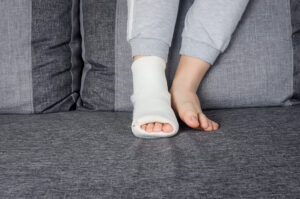An Achilles tendon rupture is a tearing or snapping of the Achilles tendon, which connects the calf muscles to the heel bone. It is a relatively common injury, especially among athletes and individuals involved in sports that require quick and forceful movements, such as basketball, tennis, or soccer.
The incidence of Achilles tendon ruptures varies depending on various factors, including age, sex, and physical activity. Generally, it occurs more frequently in men than women, and the risk increases with age. It’s estimated that about 18 to 40 individuals per 100,000 experience an Achilles tendon rupture each year.

Treatment options for Achilles tendon ruptures can be broadly classified into surgical and non-surgical approaches. The choice of treatment depends on various factors, such as the individual’s age, activity level, extent of the injury, and personal preferences.
Non-surgical treatment often involves immobilization of the leg in a cast or walking boot, along with physical therapy to gradually regain strength and flexibility. This approach is generally considered for older individuals or those with medical conditions that make surgery risky. Non-surgical treatment may have a higher risk of re-rupture compared to surgery, but it can still yield satisfactory outcomes in some cases.
Surgical treatment typically involves repairing the ruptured tendon through a surgical procedure. This may be performed through open surgery, where a single large incision is made, or using a minimally invasive technique known as percutaneous surgery (see PARS by Arthrex). Surgical treatment often results in better initial strength and lower re-rupture rates compared to non-surgical treatment.

Re-rupture rates after either surgical or non-surgical treatment can vary, but studies suggest that the overall risk of re-rupture is relatively low. Surgical treatment generally has lower re-rupture rates, ranging from 1% to 5%, whereas non-surgical treatment may have slightly higher re-rupture rates, ranging from 5% to 10%.
It’s important to note that treatment decisions should be made in consultation with a medical professional, who can evaluate your specific situation and recommend the most suitable approach based on your individual circumstances.





